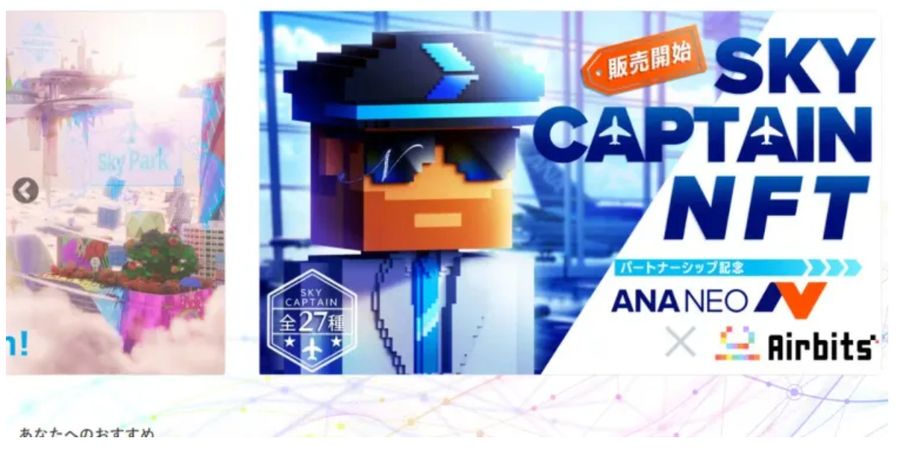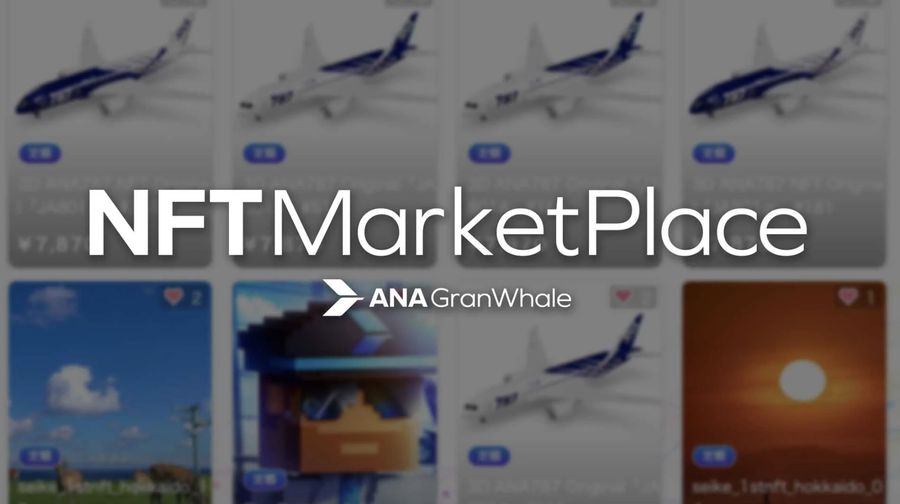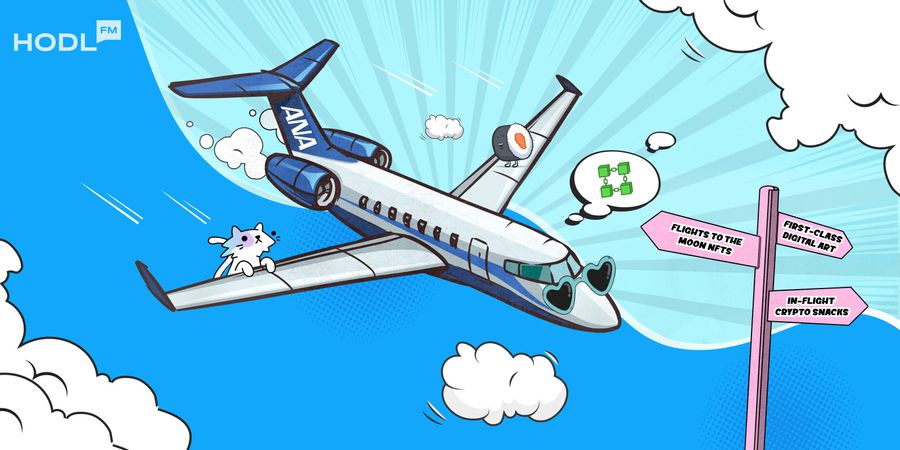Stop rubbing your eyes in disbelief, you will damage your cornea. The title is neither misleading nor clickbait.
That’s right, aviation and the digital world collide as All Nippon Airways (ANA), Japan’s leading airline group, takes flight into the world of non-fungible tokens (NFTs) with the launch of the ANA GranWhale NFT Marketplace. This exciting venture opens up a new dimension for ANA, allowing aviation enthusiasts to own unique digital assets while exploring the intersection of airlines and Web3. Fasten your seatbelts and let’s take off!
Aviation Photography Takes Flight on ANA’s Newly Launched NFT Marketplace
Get ready to glide among the clouds as ANA’s aeronautical-themed GranWhale NFT Marketplace showcases a collection of awe-inspiring aviation photography. Curated in collaboration with acclaimed aerial photographer Luke Ozawa, this inaugural collection brings the beauty of the skies to the digital realm. From stunning aerial landscapes to captivating images of ANA’s aircraft fleet, each NFT represents a unique piece of art capturing the essence of aviation.

Exploring the Features of ANA’s GranWhale NFT Marketplace
ANA’s GranWhale NFT Marketplace offers an array of exciting features. With user-friendly navigation and a secure environment, enthusiasts and collectors can easily engage with the platform. Powered by blockchain technology, GranWhale ensures the authenticity and ownership of each NFT, providing buyers with confidence in their digital acquisitions. ANA’s dedication to customer experience shines through this innovative marketplace. The official statement regarding the first batch of NFTs is as follows:
“From May 30, aerial photographer Luke Ozawa’s first digital photo will be converted to NFT. One of them will be sold with a positive film, which is the source of photo development. The price is 100,000 yen, and the NFT with positive film will be sold at auction.”
ANA Holdings: Japan’s Largest Airline Group
ANA Holdings, the parent company of All Nippon Airways, stands tall as Japan’s largest airline group. With a commitment to safety, quality, and customer satisfaction, ANA has garnered a sterling reputation in the aviation industry.
With revenues of $12.2 billion in its last fiscal year, ANA announced that it plans to increase the NFT product line in the future and aims to improve the value of the customer experience through NFT commercialization.
This bold venture into NFTs exemplifies ANA’s dedication to innovation and willingness to embrace emerging technologies. By venturing into the world of NFTs, ANA aims to elevate its offerings and engage with a wider audience. But they are not alone in the NFT biz.

Examples of Successful Collaborations between Airline Companies and NFT Projects
ANA’s foray into the NFT space is not the first instance of airline companies exploring the potential of digital assets. Several successful collaborations between airlines and NFT projects have already taken place, showcasing the versatility and potential of this technology.
- airBaltic’s Planies: Latvian airline airBaltic introduced the “Planies,” a collection of airplane-themed digital cartoons minted as NFTs on the Ethereum blockchain. These unique artworks not only hold an aesthetic value but also offer benefits, such as earning frequent flyer miles. Talk about utility!
- Kinectair: A startup building a decentralized on-demand air travel network, Kinectair incorporates NFTs into its loyalty program. Customers can access different tiers of benefits by purchasing specific NFTs, enhancing their travel experience.
- Air Europa’s NFTickets: Spanish airline Air Europa partnered with blockchain technology firm TravelX to create NFTickets. These NFTs combine artwork by recognized artists with business class tickets for specific flights, offering a unique travel experience to the holders.
- Flybondi’s Web3 Integration: Argentinian low-cost airline Flybondi is integrating Web3 technology into its ticketing process by issuing e-tickets as NFTs. Passengers flying with Flybondi have the option to activate NFT versions of their tickets, leveraging the capabilities of Algorand blockchain technology.
Such examples demonstrate the diverse applications of NFTs in the airline industry, ranging from enhancing loyalty programs to creating unique travel experiences. As airlines embrace this technology, passengers can expect a more immersive and personalized journey.
What does NFT stand for in aviation?
In the context of aviation, NFT stands for non-fungible tokens that carry aviation-related utilities. As in any context, these digital tokens represent unique assets, such as images, videos, or other forms of digital media, and are built on the blockchain. In this context, they represent a unique digital asset that is stored on a blockchain and certifies ownership of a specific item, such as aviation-related artwork, collectibles, or even airline tickets.
How does NFTs work for ticketing?
They just do. They are incredible really.
NFTs can revolutionize ticketing by bringing greater transparency, security, and flexibility to the process. By tokenizing airline seats, each ticket can be represented as a unique digital asset on the blockchain. This allows for secure ownership verification, easy transferability, and potential secondary market trading. NFTs also enable airlines to embed additional benefits or loyalty rewards directly into the ticket, enhancing the overall travel experience.
How to create an NFT ticket?
Good question. Creating an NFT ticket involves several steps. First, the airline needs to tokenize the ticket by associating it with a unique digital asset on the blockchain. This can be achieved through various blockchain platforms that support NFT creation, such as Ethereum or Algorand. Once the ticket is tokenized, it can be minted and made available for purchase or distribution through an NFT marketplace. The marketplace facilitates the buying, selling, and trading of these digital tickets, providing a seamless experience for travelers.
Conclusion
As ANA propels itself to soaring heights in the expansive NFT landscape with the GranWhale Marketplace, we will witness the mesmerizing convergence of aviation and digital art as ANA spreads its wings to embrace blockchain technology. Brace yourself for an extraordinary opportunity to possess one-of-a-kind digital assets that encapsulate the very essence of flight. This audacious leap by Japan’s aviation powerhouse not only signifies a groundbreaking milestone but also sets the stage for future collaborations and awe-inspiring transformations within the aviation industry. Fasten your seatbelts, Hodlers, your next plane ticket may drop into your Web3 wallet. Just don’t forget to check-in in time though.



